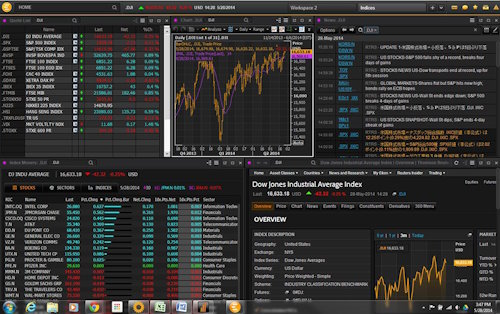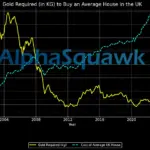
Introduction
FX derivatives play an integral role in the global markets, offering a multitude of trading strategies to suit different participants’ needs. Whether that’s an import-export dealer looking to lock in an exchange rate, a merger and acquisition banker financing cross-border deals, a hedge fund trying to de-peg a currency using leverage, or a retail speculator trading online for some quick profit, the use cases are numerous. In this detailed guide, we will demystify the different types of FX derivatives and explore their significance in the world of forex trading.
Derivatives used in forex are financial instruments derived from the underlying currency spot exchange rates. Spot rates are the rates at which you could exchange one currency for another right now at the current market price. However, unlike spot FX trading which involves immediate transactions, derivatives allow market participants to manage future uncertainties. They offer the ability to anticipate and potentially profit from market movements, to hedge against adverse changes, or to gain exposure to foreign markets without having to deal in foreign currencies directly.
From simple forward contracts that secure a future exchange rate, to complex options strategies that provide the right, but not the obligation, to exchange currencies, these various derivations of the underlying, bring a level of dynamism and versatility to currency trading. Let’s dig in.
Different Types of FX Derivatives
There are variety of instruments derived from currency exchange rates, each offering different levels of flexibility, risk, and potential returns. Below we will provide an overview the most common types: Forward Contracts, Futures Contracts, Options Contracts, Contract for Differences (CFDs), Swaps and Swaptions.
Forward Contracts
A Forward Contract is a private agreement between two parties to buy or sell a particular currency at a predetermined price, at a specific future date. It is custom-made to the parties’ requirements, which means contract sizes and settlement dates are flexible. They are not traded on regulated exchanges and so you have counterparty risk, meaning if the other side refuses to honour the contract or goes bust in the meantime that problem is on you and your lawyers. These deals may or may not involve brokers and financial institutions who may add some protection to the deal and are considered to be traded OTC (over the counter) i.e. not on a regulated exchange.
Use Cases: Forward contracts are popular with businesses dealing in foreign trade. They offer the ability to lock in an exchange rate with custom terms and thus mitigate the risk of adverse currency movements for very specific requirements.
Futures Contracts
FX Futures Contracts, like Forward Contracts, involve an agreement to buy or sell a currency at a predetermined price on a specific future date. However, unlike Forward Contracts, Futures are standardized and traded on regulated exchanges such as the Chicago Mercantile Exchange (CME). There is no counterparty risk with regulated futures, as all contracts are honoured due to the presence of a clearinghouse.
Use Cases: Futures are commonly used for both hedging and speculation. They allow traders to bet on the direction of currency movement and hedge against potential losses. Futures contracts by their very nature are highly leveraged instruments.
Options Contracts
FX Options Contracts provide the right, but not the obligation, to buy (call option) or sell (put option) a specific amount of a currency at a set price, at any time before the contract expires. The can be OTC (customised) or exchange traded (standardised) with the same implications of counterparty risk mentioned above. They can be written for spot or as options on futures which are known as ‘Futops’. Large options exchanges would the CBOE (Chicago Board Options Exchange) and ISE (International Securities Exchange).
Use Cases: Options are versatile and can be used for hedging, speculation, or generating income. They provide traders with a chance to profit from market fluctuations without the obligation of fulfilling the contract.
Contract for Differences (CFDs)
FX CFDs are a type of derivative where the parties agree to exchange the difference in value of a currency pair between the time the contract is opened and when it is closed. They are traded OTC but often have generalised specifications when it comes to online regulated providers. Protections for customers have been increasing recently for retail speculators trading CFDs. Large, mostly retail focussed CFD providers are firms like IG and CMC Markets.
Use Cases: CFDs are a popular choice for short-term traders and speculators as they allow for high leverage and the ability to profit from both rising and falling markets they also offer much smaller trade sizes than traditional futures contracts. Although futures exchanges are speeding into micro and nano sized offerings to fight for this share of retail speculators with small accounts.
Swap Contracts
A swap is a financial derivative that allows two parties to exchange financial instruments, such as interest payments, currencies, or commodities. Unlike futures, swaps are mostly traded OTC without a clearinghouse involved (although some jurisdictions now require mandatory clearing for certain swaps post-financial crisis).
Without the standardized exchange specifications imposed on futures, swaps can be fully customized to the client’s requirements, are subject to custom credit agreements, and thus don’t require upfront margin, reducing immediate cash flow burdens. Additionally, swaps allow for managing basis risk, such as differences between regional oil prices (e.g., Far East vs. Mediterranean oil), which futures may not address as effectively.
The intent of a swap is usually to hedge some form of risk or to gain access to a type of asset or interest rate that might not be otherwise available to one of the parties.
- FX Swaps: An FX swap is essentially a combination of a spot transaction and a forward transaction. An FX Swap is a two-legged financial transaction. In the first leg, the trader buys (or sells) a certain amount of a currency against another at the agreed spot price. In the second leg, which is agreed upon at the outset, the trader reverses the trade, selling (or buying) the same amount of currency back at a future date and at a price agreed upon in the contract (the forward price). The main purpose of FX Swaps is to hedge against FX exposure or adjust the maturity of an existing forward FX position.
- Currency Swaps: A Currency Swap is a more complex type of swap transaction. It involves the simultaneous exchange of one currency for another, and the agreement to reverse the exchange at a later date (which could be many years into the future). However, in addition to the principal amounts, Currency Swaps also involve exchanging interest payments over the life of the agreement. These interest payments are based on the principal amounts and the stipulated interest rates. Currency Swaps are typically used to obtain foreign currency loans at a better interest rate than a company could obtain by borrowing directly in a foreign market or as a method of hedging long-term FX exposure.
- Interest Rate Swaps: This is another common type of swap for comparison. In an interest rate swap, two parties exchange interest payments, typically one with a fixed rate and one with a floating rate (a vanilla swap). The party paying the fixed rate will pay a set rate of interest on a nominal principal amount, while the party paying the floating rate will pay an interest rate that varies with a reference interest rate (such as SOFR) on the same nominal principal amount. The actual principal does not change hands. Only the interest payments are swapped. This type of swap is often used by companies to manage interest rate risk. So, the difference between fixed and floating in this context is that the fixed rate is set at the beginning of the contract and doesn’t change, while the floating rate can vary over the life of the contract, usually pegged to a reference rate.
Use Cases: Swaps are typically used by financial institutions and corporations to fund foreign currency investments, and manage risks associated with fluctuations in exchange and interest rates.
Swaptions
A swaption, specifically, is an option on a swap. It gives the holder the right, but not the obligation, to enter into a swap at a future date. Like swaps, swaptions are typically traded OTC.
Use Cases: Swaptions are typically used by corporations and investors for hedging purposes, to protect against large swings in exchange rates, or to take advantage of expected movements in currency rates.
| FX Derivative | Trade Venue | Counterparty Risk | Common Use Cases |
|---|---|---|---|
| Forward Contracts | OTC | Yes | Hedging for specific requirements |
| Futures Contracts | Regulated Exchanges (e.g., CME) | No | Hedging and speculation |
| Options Contracts | OTC or Regulated Exchanges (e.g., CBOE, ISE) | Depends on Venue | Hedging, speculation, income generation |
| Contract for Differences (CFDs) | OTC | Yes | Short-term trading and speculation |
| Swap Contracts | OTC | Yes | Hedging against currency or interest rate risk |
| Swaptions | OTC | Yes | Hedging against large swings in exchange rates or taking advantage of expected movements |
Understanding the FX Derivatives Market
The FX market is a global, decentralized marketplace where participants from around the world engage in the trading of currency-based financial contracts. Much of the OTC market, which trades $7.5 trillion per day as of the BIS April 2022 report, operates 24 hours a day, five days a week, with exchange based contracts not far behind. It is the largest and most liquid financial market in the world lead by London, with FX Swaps accounting for 46% ($1,333 billion) of all FX traded instruments in London by daily volume as of Oct 2022. Below, we will explore the structure of this market, its key players, and the regulatory environment that governs it.
Market Structure
The FX market is primarily an Over-The-Counter (OTC) market. This means that trading takes place directly between two parties, without the supervision of an exchange. However, certain types of FX derivatives, like futures and options, are also traded on regulated exchanges.
The market is essentially split into two tiers: the interbank or wholesale market, and the client or retail market. The interbank market comprises the largest banks in the world who trade with each other and with large commercial clients. The client market, on the other hand, includes smaller banks, brokers, hedge funds, corporations, and individual traders.
Key Market Participants
The key participants in the FX derivatives market include large international banks, financial institutions, hedge funds, corporations, brokers, and individual traders. These participants engage in trading for various reasons, from hedging currency risk and speculating on currency movements, to executing cross-border transactions and managing liquidity.
Regulatory Environment
The FX derivatives market is overseen by various financial regulatory bodies across the globe. In the United States, the regulation depends on the type of activity:
- The cash (or “spot”) FX market, which primarily involves trades that settle within a couple of days, is regulated by banking regulators like the Office of the Comptroller of the Currency (OCC), the Federal Reserve, and the Federal Deposit Insurance Corporation (FDIC).
- The Commodity Futures Trading Commission (CFTC) and the National Futures Association (NFA) oversee the futures and options on futures markets, including those involving currencies.
In Europe, the European Securities and Markets Authority (ESMA) is responsible for overseeing financial markets, including the FX derivatives market. In the United Kingdom, the Financial Conduct Authority (FCA) and the Prudential Regulation Authority (PRA) share responsibilities. The FCA oversees conduct within financial markets, ensures market integrity, and protects consumers. The PRA, part of the Bank of England, is responsible for the prudential regulation and supervision of banks, building societies, credit unions, insurers, and major investment firms.
These regulatory bodies typically set standards for market integrity, customer protection, minimum capital requirements, and reporting obligations. They also conduct regular audits of financial institutions to ensure compliance. However, given the global nature of the FX market and the prevalence of OTC trading, it can be challenging for these entities to monitor all market activity.
Key Considerations when Trading FX Derivatives
Trading with these instruments involves complex decisions and carries significant risks. Below, we highlight some key considerations that can help in making informed trading decisions and managing risk effectively.
Market Volatility
FX markets are subject to volatility caused by economic data releases, geopolitical events, central bank policies, and other macroeconomic factors. Volatility can lead to large price swings, which can result in substantial profits or losses. Traders should understand how volatility affects the value of FX derivatives and use risk management techniques to limit potential losses.
Leverage
Many FX derivatives provide leverage, which allows traders to control a large position with a small amount of capital. While leverage can amplify profits, it can also magnify losses. Traders should use leverage cautiously and understand how it affects their potential return and risk.
Counterparty Risk
In OTC markets, there is a risk that a counterparty may default on their obligations. This is particularly relevant for products like forward contracts and swaps. Traders should assess the creditworthiness of their counterparties and consider using risk mitigation techniques, such as collateral agreements.
Even at a retail level do your research carefully when looking at FX trading or CFD providers, where are they based, who are they regulated by, how long have they been around and what are the reviews like from actual users?.
Understanding the Contract
Each type of FX derivative has unique contract specifications, including the size of the contract, settlement process, and pricing model. Obviously you thoroughly need to understand the contract you are entering into, you don’t want to be holding a futures contract past expiry for delivery unintentionally!
Case Studies
To highlight the significance and potential impact of FX derivatives, let’s look at a few real-world examples:
Success – George Soros and the Bank of England: In 1992, George Soros, a well-known hedge fund manager, made significant profits by shorting (selling) the British pound. Although mostly done by borrowing pounds to sell spot he also used forwards, futures and options. Soros had bet that the pound would fall in value, a view based on an assessment that the UK would have to devalue the pound or withdraw from the European Exchange Rate Mechanism (ERM). When the UK government announced it was leaving the ERM and the pound was devalued, Soros’s bet paid off, earning his fund an estimated $1 billion. This example illustrates the potential for profit in the FX market when predictions about future currency movements are accurate.
Misuse – Allied Irish Banks (AIB) and John Rusnak: In 2002, AIB disclosed that it had lost more than $690 million due to fraudulent trading in the foreign exchange markets by one of its traders, John Rusnak, at its U.S. subsidiary, Allfirst Financial. Rusnak had been hiding losses from his foreign exchange trades over five years, covering his tracks by creating fictitious options contracts that were entered into Allfirst’s systems. This case highlights the risks of a lack of proper internal controls and oversight in trading operations, as well as the potential for significant losses in FX trading. It also illustrates the dangers of misunderstanding or misuse of FX derivatives.
By understanding the different types of FX derivatives, their potential uses, and their associated risks, traders can make more informed decisions and choose the contracts that best suit their trading style and strategy.
Even at a retail level, do your research carefully when looking at FX trading or CFD providers, where are they based, who are they regulated by, how long have they been around, and what are the reviews like from actual users?
Regulatory Jurisdiction
Traders should understand the regulatory environment in which they operate. Different jurisdictions have different rules regarding trading FX derivatives, including regulations on leverage, margin requirements, and reporting obligations. Traders should be aware of these rules and ensure they are in compliance. If retail and looking for someone to trade through online it’s not rocket science to determine that a firm regulated by Vanuatu’s financial services regulator is not going to be as good as a firm regulated by the UK’s FCA unless you’re from a sanctioned country with limited options.
To conclude, FX derivatives are powerful tools for managing risk and taking advantage of market opportunities. By understanding these complex instruments and the markets in which they trade, you can better navigate the world of forex trading. Whether you’re a seasoned professional or a beginner looking to expand your trading repertoire, this knowledge can prove invaluable. Happy trading!
FAQs
- What is an FX derivative? A a financial contract that derives its value from an underlying currency exchange rate. The most common types include forward contracts, futures contracts, options contracts, swaps, and Contract for Differences (CFDs).
- How are FX derivatives used? Primarily to hedge against future changes in exchange rates, speculate on currency movements, or gain access to foreign markets without having to deal in foreign currencies directly.
- Are FX derivatives risky? All financial trading involves risk, and FX derivatives are no exception. The risk associated with FX derivatives can be significant due to factors such as market volatility, leverage, and counterparty risk. It is important for traders to understand these risks and use risk management strategies to mitigate them.
- How are FX derivatives regulated? FX derivatives are overseen by various financial regulatory bodies worldwide. In the United States, the Commodity Futures Trading Commission (CFTC) and the National Futures Association (NFA) oversee the futures and options on futures markets, including those involving currencies. In Europe, the European Securities and Markets Authority (ESMA) oversees financial markets, including the FX derivatives market.
- How can I trade FX derivatives? FX derivatives can be traded over-the-counter (OTC) or on regulated exchanges, depending on the type of derivative. To trade FX derivatives, you can open an account with a brokerage or FCM that offers these services. Make sure to choose a reputable broker that is regulated in a jurisdiction with high standards preferably your own.






Leave a Reply